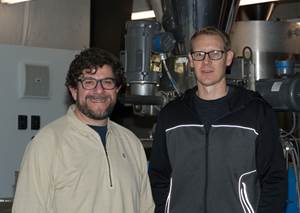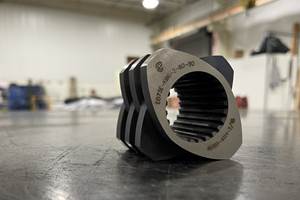Car Production High, Parts Production Slowing
AUTOMOTIVE
Trend is likely to continue through the end of 2016.
Annual motor-vehicle production is still at a historically high rate of just over 17 million vehicles. However, the annual rate peaked in October 2015. The rate of growth, which is more important in forecasting than the current level, has decelerated since June 2012. And other than the huge spike resulting from the financial collapse in 2008, the wholesale inventory-to-sales ratio has risen steadily since September 2014 and is currently at an all-time high. Because of these trends, motor-vehicle and parts production has grown at a decelerating rate since July 2014. That trend is likely to continue over the next six months, at least. Let’s look at some of the leading indicators to see why.
Real 10-Year Treasury Rate. The real 10-yr U.S. Treasury bond interest rate was 0.96% in June 2016, falling below 1% for the first time since April 2015. Since the Fed announced it was raising its overnight rate, the real 10-yr Treasury rate has dropped in each of the last seven months. A significant reason for this is that the rate of inflation, while still low, has picked up since 2015. So, even though the nominal rate has not changed much since February, the real rate continues to fall (the real rate is the nominal rate minus inflation).
Real Motor-Vehicle and Parts Consumer Spending. In May 2016, real motor vehicle and parts spending contracted by 0.7% compared with a year ago. This was the fifth time in the last six months that the month-over-month rate of change contracted. The annual rate of change has grown at a decelerating rate since May 2015. And it will likely contract in the next couple of months. The change in the real 10-yr Treasury rate tends to lead real motor vehicle and parts spending by six to 12 months. Therefore, the annual rate of change should hit bottom sometime between June and December of 2016.
Motor-Vehicle and Parts New Orders. New orders for motor vehicles and parts grew 1.3% in May 2016 compared with a year ago. This was the 18th consecutive month of growth, although it was the weakest month of growth during that period. The annual rate of growth in new orders was still quite positive in May, but it has decelerated since its peak in June 2015. With the inventory-to-sales ratio steadily increasing, it seems likely that new orders will continue to grow at a slower rate and may even contract in the second half of 2016. This would put a damper on future parts production.
Motor-Vehicle and Parts Production. The level of motor-vehicle and parts production is near all-time highs and well above the level prior to the financial collapse. However, in May 2016, production contracted compared with one year ago for the first time since October 2009. That is not surprising, based on the trends mentioned above. The annual rate of change in the production index has grown at a decelerating rate since July 2014 and will likely continue to do so into 2017.
ABOUT THE AUTHOR
Steven Kline Jr. is part of the fourth-generation ownership team of Cincinnati-based Gardner Business Media, which is the publisher of Plastics Technology. He is currently the company’s director of market intelligence. Contact: (513) 527-8800; skline2@gardnerweb.com; gardnerweb.com/economics/blog
Related Content
More Than a Compounder: They Have the Science to Create New Custom Materials
Insight Polymers & Compounders leverages its expertise in polymer chemistry to develop next-generation materials.
Read MoreWhat to Know About Your Materials When Choosing a Feeder
Feeder performance is crucial to operating extrusion and compounding lines. And consistent, reliable feeding depends in large part on selecting a feeder compatible with the materials and additives you intend to process. Follow these tips to analyze your feeder requirements.
Read MoreHow to Configure Your Twin-Screw Extruder for Mixing: Part 5
Understand the differences between distributive and dispersive mixing, and how you can promote one or the other in your screw design.
Read MoreSmall Batches, Big Success
With no minimum order and an impeccable record of on-time delivery, Precision Color Compounds is becoming a force in the color masterbatch business.
Read MoreRead Next
For PLASTICS' CEO Seaholm, NPE to Shine Light on Sustainability Successes
With advocacy, communication and sustainability as three main pillars, Seaholm leads a trade association to NPE that ‘is more active today than we have ever been.’
Read MoreSee Recyclers Close the Loop on Trade Show Production Scrap at NPE2024
A collaboration between show organizer PLASTICS, recycler CPR and size reduction experts WEIMA and Conair recovered and recycled all production scrap at NPE2024.
Read MoreBeyond Prototypes: 8 Ways the Plastics Industry Is Using 3D Printing
Plastics processors are finding applications for 3D printing around the plant and across the supply chain. Here are 8 examples to look for at NPE2024.
Read More
.JPG;width=70;height=70;mode=crop)






















